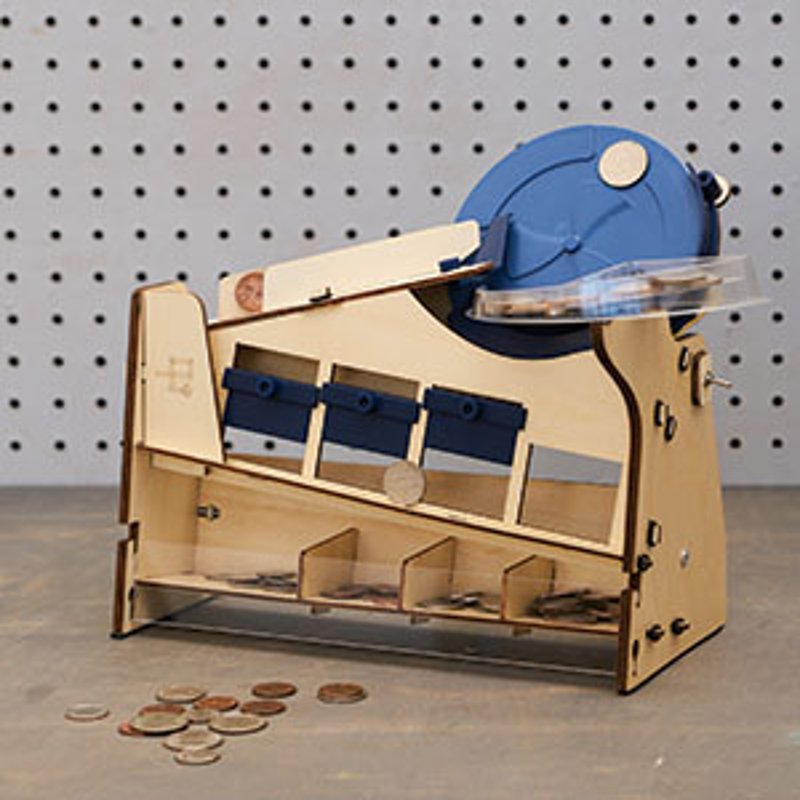Coin Sorting Machine
In this Eureka Crate, you'll explore the science, engineering, and history behind coin sorters while building one of your own!

Explore:
- Universal Sorting
- History of Coins
- Conditional Logic
Behind the design
Peek into the KiwiCo product design studio and the design process behind the Eureka Crate Coin Sorting Machine.
- Instead of designing all the machine's mechanisms at the same time, we designed them piece by piece. This early prototype focused on how to grab coins out of the hopper — the coin wheel was wood, the slots were made from sticky foam, and a piece of paper kept the coins from falling off the right edge. Notice though that the gates were just blocks of wood, and there was no coin catch.
Partial Prototypes
- Check out where the tabs fit into the sides, and you'll notice that hardly any parts on the coin sorting machine connect at a 90° angle. All the odd angles help control how the coins roll: for example, the front ramp tilts 7° down, shallow enough that coins don't speed past the windows, and it tilts 15° backward so they don't roll off the front.
Odd Angles
- When we first designed the gate pieces, you practically needed three hands to hold and screw them together. But then we added pins to the back gate piece. The pins don't just help line up the two pieces — they also keep them from spinning and sliding, making it much easier to keep them in place while you fasten them to the machine.
Pin Connectors
- We used a few different kinds of plastics in the coin sorting machine. The main blue plastic is an injection-molded plastic, which is hard and sturdy. However, it's too hard to vibrate very well, which is why we had to make the coin tray out of a different plastic. The coin tray is a soft, vacuum-formed plastic that would be too flimsy for the coin wheel but is perfect for vibrating coins into the machine.
Fantastic Plastics
